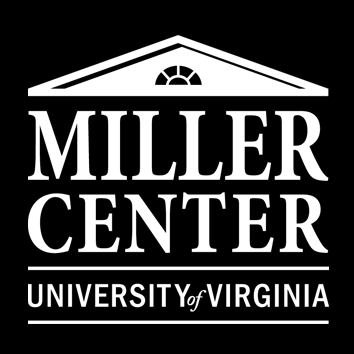Transcript
Edited by Kent B. Germany and David C. Carter, with Ashley Havard High and Patricia Dunn
See the daily introduction for 1964-06-30 [from the Norton edition]
On June 19, Senator Kennedy’s airplane crashed on its way to the state Democratic convention, killing the pilot, Edwin Zimny, and Kennedy aide Edward Moss. Indiana Senator Birch Bayh and Bayh’s wife, Marvella, survived the impact with minor injuries, with Senator Bayh reportedly able to pull Kennedy’s body from the wreckage. This call was Johnson’s first recorded conversation with the young Massachusetts leader since the accident. Kennedy had broken his back and was confined to a Stryker spinal support apparatus at the Cooley Dickinson Hospital in Northampton, Massachusetts.[note 1] “Sens. Kennedy, Bayh Hurt,” Chicago Tribune, 20 June 1964; John H. Fenton, “Edward Kennedy Takes First Steps,” New York Times, 4 December 1964.
Hello?[note 2] The Presidential Recordings Program revised the following section of text in 2021 for inclusion in The LBJ Telephone Tapes, a project produced by the Miller Center in partnership with the Lyndon B. Johnson Presidential Library to commemorate the library's 50th anniversary.
Oh, Mr. President?
My friend, I’m sure glad to hear your voice.
Well, thank you so much. Listen, I wanted to call and tell you how much we appreciate it. Joan [Kennedy] appreciates everything you’ve done, and your—[note 3] Kennedy had been married to Virginia Joan Bennett since 1958.
Haven’t done anything. I haven’t done anything, but I’m sure ready and willing.
Well, no. Well, you sent all those wonderful people up from the [U.S.] Army, and . . . Secretary [Cyrus R. “Cy”] Vance did. And they’ve made a great deal of difference, and everyone’s been so, so kind down there, and they’ve taken great care of me. [President Johnson acknowledges.] So I’ve been really, really coming along now, making progress.
Well, you got a bad break, but it’ll . . . My mother used to tell me that things like that develop character. It’ll make you stronger when you get older.
Well, I don’t know about that. [President Johnson chuckles.] You know, you’re ready to trade a little of that for a few weeks right now, I should say. But anyway, that’s what I keep reading in all that mail. They say, “Well, you’re going to . . . after all that, you get down on that back a little while, and think and do a little suffering, you’ll be a better man.” So, I guess I’ll take my chances with that, anyway.
Well, you’re a good guy, and you got lots of guts, and stay in there and pitch, and anything we can do, we’re ready.
Well, really appreciate it, Mr. President, and Joan wants to thank you for everything. Mrs. [Lady Bird] Johnson called, and you’ve been awfully kind during this, and we’re very much appreciative, and my parents are, too.
You just tell them we’re ready to do anything and everything that you want done. And we’ll elect you by a bigger vote than you got before.[note 4] In a special election in 1962, Edward Kennedy defeated George Cabot Lodge to fill the seat vacated by his brother John. In November 1964, he was reelected to a full term, defeating Republican Howard Whitmore Jr. by an almost 3-to-1 margin (1,716,908 to 587,663). John H. Fenton, “Edward Kennedy Takes First Steps,” New York Times, 4 December 1964.
I know it. God, now we’re really going to have to . . . you’re going to have to pull me through up here.
Well, just tell them that I’ll fill your speaking engagements.
[Laughs.] Well, I certainly shall. That was awful kind of you, but we’ll be looking forward to getting back down there.
Thank you. Give Joan a hug for me.
Certainly will, Mr. President.
Bye.
Thank you very much.
Bye. Thank you for calling.[note 5] End of 2021 revisions.
5:45 p.m.—6:13 p.m.: Lee White joined the President briefly before the two men met off the record with Secretary of the Interior Stewart Udall, Washington Senator Warren Magnuson, Nevada Senator Alan Bible, and Arizona Senator Carl Hayden. At stake were details of an electric power transmission system being called the Pacific West Coast electrical intertie. A number of power-hungry western states wanted to have the federal government link federal hydroelectric power production in the Pacific Northwest to other parts of the West. After the meeting, Johnson asked Congress for $45 million to kick-start the massive project to build power lines from Washington to California, Nevada, and Arizona.[note 6] #x201C;Johnson Requests Funds for Start of Power Intertie,” Wall Street Journal, 30 June 1964; John H. Allan, “Big Power System in West Spurs Capital Issues,” New York Times, 3 September 1964. After the session broke up at 6:13 p.m., Senator Magnuson stayed for another two minutes and Lee White remained for a solo session that lasted six minutes.
Afterward, Johnson waited for a call to be placed to Myer Feldman and engaged in an office conversation about paperwork with an unidentified person.[note 7] Tape WH6406.19, Citation #3968, Recordings of Telephone Conversations—White House Series, Recordings and Transcripts of Conversations and Meetings, Lyndon B. Johnson Library. He then took a call from Capitol Hill.
Cite as
“Lyndon Johnson and Edward Kennedy on 30 June 1964,” Tape WH6406.19, Citation #3967, Presidential Recordings Digital Edition [Mississippi Burning and the Passage of the Civil Rights Act, vol. 8, ed. Kent B. Germany and David C. Carter] (Charlottesville: University of Virginia Press, 2014–). URL: http://prde.upress.virginia.edu/conversations/9080107
Originally published in
Lyndon B. Johnson: Mississippi Burning and the Passage of the Civil Rights Act, June 23, 1964–July 4, 1964, ed. Kent B. Germany and David C. Carter, vol. 8 of The Presidential Recordings (New York and London: W. W. Norton and Company, 2011).




